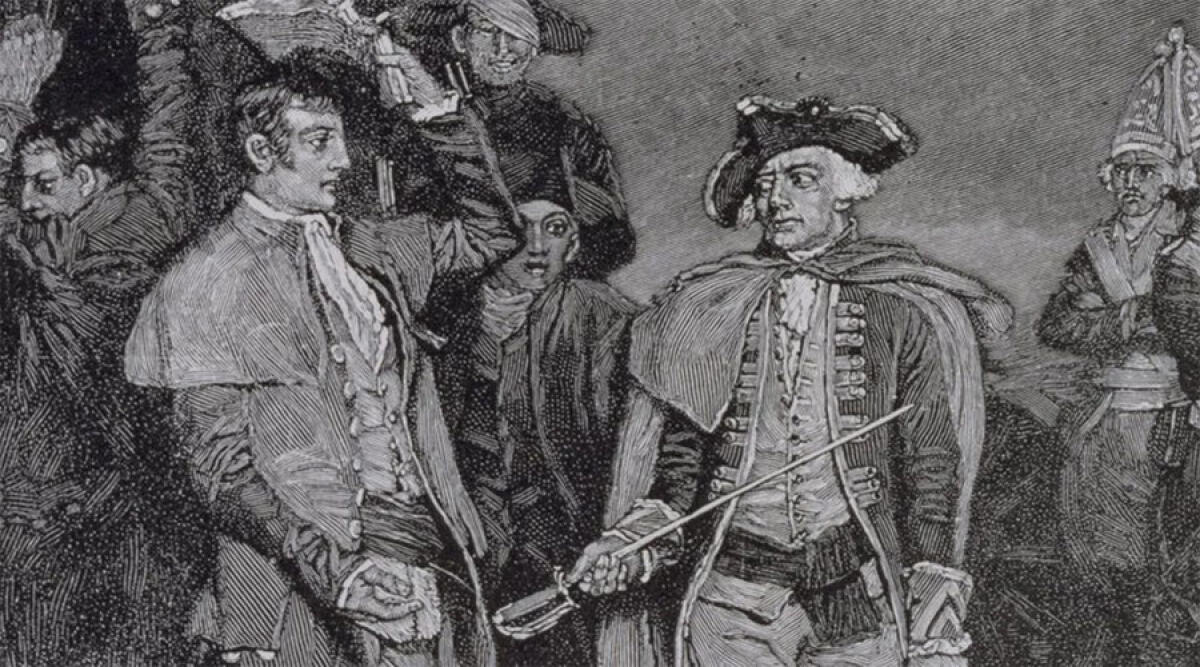December 1774: The Shot, Not
As the Anniversary of the Boston Tea Party approached, tensions were running high throughout New England. The port of Boston had been closed by numerous British ships, including a 50-gun man-of-war floating in the harbor, and another in the Charles River. The only entrance to the town was guarded by a regiment on either side of the road, and several other regiments were stationed throughout the area. About as many British soldiers were posted in Boston as there were male citizens.
The Boston Committee of Correspondence had foreseen the inevitable shortages this would create and had previously sent letters to the other colonies requesting aid. In response, by the end of the year, over 100 ships would arrive in Marblehead just up the coast, loaded with wheat, rice, corn, bread, some iron products, and even some sheep and a few dozen heads of cattle. Which, of course, created thorny problems of how to fairly distribute it, and how to get it past all those soldiers and into the city where it was needed most.
Meanwhile, over in England, King George III was more concerned with a different commodity. Back in October, he had issued an order forbidding the shipment of arms and gunpowder to the colonies. Though the order was confidential, word of it reached the patriots, and in response, they looked to take control of any material they could get their hands on, and squirrel it away for any future conflict. This had led to a near-incident called the ‘Powder Alarm’ in which British soldiers began clearing out an armory in Somerville, rumors flew that blood had been shed, and thousands of American militia gathered and prepared to fight. In the end, the British retreated with their material and numerous Loyalist citizens back into the city, and violence was averted.
But only for a while. Just up the coast in Portsmouth, New Hampshire, there is a fort called William and Mary. It contained over a dozen cannons and stores of gunpowder but was manned by only six British soldiers. In the wake of the Powder Alarm, a Boston silversmith named Paul Revere road north to warn that the British were about to evacuate the fort and take its contents. In response, on the morning of December 14, a mob of several hundred men, led by John Langdon and a drummer, descended on the fort and demanded its surrender. The fort’s commanding officer, Captain John Cochran, bravely refused. Whereupon Langdon’s men stormed the wall, the defending soldiers opened fire with 3 cannons and a round of musket fire, but were overwhelmed by the sheer number of American raiders. Langdon’s men broke into the powder house and took 100 barrels of gunpowder before hauling down the fort’s British flag and stomping on it. The next day, Americans led by John Sullivan returned and removed 16 cannons and military supplies clearly marked with imperial symbols.
There were no deaths but several injuries in the incident, and the British soldiers were released. But the striking of the flag – perhaps the first time that British citizens had ever shown such disdain – so infuriated King George that he charged Langdon and Sullivan with high treason and refused to hold any further negotiations with any Americans, perhaps ensuring the inevitability of future conflict.
The raid on Fort William and Mary is the first military incident in the Revolution, though it is largely forgotten to history. As such, it is known to New Hampshirites as “The Shot Not Heard Around the World.”
But as for those cannons, well, they would not be forgotten. They would reappear the following spring, atop some high ground adjacent to Boston known as Bunker Hill.
